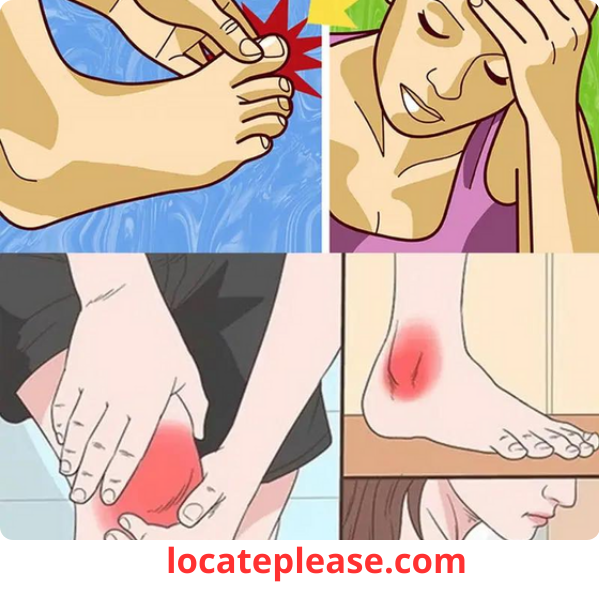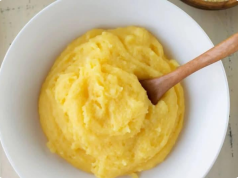You’ve probably heard of gout — the painful joint condition that can strike suddenly, often in the big toe.
But do you know what’s behind it?
👉 High uric acid levels, also known as hyperuricemia, is the silent culprit.
Uric acid is a natural byproduct of your body’s metabolism — formed when purines (compounds found in DNA and certain foods) break down.
Under normal conditions, your kidneys filter out excess uric acid, and it’s eliminated through urine.
But when levels rise — either because your body produces too much or your kidneys can’t remove it fast enough — trouble begins.
And it’s not just about joint pain.
When uric acid builds up, it can crystallize and wreak havoc on multiple systems in your body.
Here are 4 key things that happen when uric acid levels rise — and why you should take it seriously.
🚨 1. Gout: Sudden, Severe Joint Pain and Inflammation
The most well-known consequence of high uric acid is gout — a form of inflammatory arthritis.
When excess uric acid forms needle-like crystals in your joints, it triggers a violent immune response, leading to:
- Intense pain (often starting at night)
- Swelling, redness, and heat in the affected joint
- Extreme tenderness — even the weight of a bedsheet can be unbearable
Commonly affected joints:
- Big toe (most common)
- Ankles, knees, fingers, wrists, and heels
Gout attacks can last days or weeks, and without treatment, they may become more frequent and severe — even leading to joint damage and deformity.
🧊 2. Kidney Stones: Sharp Pain and Urinary Problems
Uric acid doesn’t just settle in joints — it can also crystallize in the kidneys, forming uric acid kidney stones.
These stones can cause:
- Severe back or side pain (radiating to the groin)
- Painful or frequent urination
- Blood in the urine
- Nausea and vomiting
Unlike calcium stones, uric acid stones are not always visible on standard X-rays, making them harder to diagnose.
Over time, repeated stone formation can damage kidney tissue and impair kidney function.
🫁 3. Kidney Damage and Chronic Kidney Disease
Even without stones, persistently high uric acid can harm the kidneys.
Excess uric acid:
- Crystallizes in kidney tubules, causing inflammation and scarring
- Contributes to high blood pressure and reduced blood flow to the kidneys
- Accelerates the progression of chronic kidney disease (CKD)
In fact, studies show that hyperuricemia is both a cause and a consequence of kidney problems — creating a dangerous cycle.
Early signs of kidney strain may be subtle:
- Fatigue
- Swelling in the legs or face
- Changes in urination
❤️ 4. Increased Risk of Heart Disease, Diabetes, and Metabolic Syndrome
High uric acid is more than a joint or kidney issue — it’s a metabolic red flag.
Elevated levels are strongly linked to:
- Hypertension (high blood pressure)
- Insulin resistance and type 2 diabetes
- Obesity and fatty liver disease
- High cholesterol and triglycerides
Why?
Uric acid promotes inflammation, oxidative stress, and endothelial dysfunction — all of which damage blood vessels and increase the risk of heart attacks and strokes.
In short:
High uric acid isn’t just a symptom — it’s a warning sign of deeper metabolic imbalance.
🔍 What Causes High Uric Acid?
Your body may produce too much uric acid or struggle to eliminate it. Common causes include:
Overproduction:
- High-purine diet (red meat, organ meats, shellfish, processed foods)
- Rapid cell turnover (e.g., during chemotherapy)
- Genetic factors
Poor Excretion:
- Kidney dysfunction
- Dehydration
- Medications (diuretics, low-dose aspirin)
- Alcohol (especially beer and spirits)
- Fructose-rich drinks (sodas, sweetened juices)
Risk Factors:
- Obesity
- Hypertension
- Diabetes
- Metabolic syndrome
- Chronic stress
- Use of iodine-based contrast dyes (for imaging)
🩺 How to Lower Uric Acid Levels
The goal is to reduce uric acid production and improve its elimination.
✅ 1. Dietary Changes
- Avoid high-purine foods:
- Organ meats (liver, kidney)
- Shellfish, anchovies, sardines
- Processed meats and sugary drinks
- Limit alcohol, especially beer and spirits
- Cut back on fructose (found in soda, candy, processed snacks)
- Eat more:
- Low-fat dairy (protective effect)
- Cherries (shown to reduce gout attacks)
- Vegetables (even high-purine ones like spinach — they don’t raise risk)
- Whole grains and fruits (except high-fructose ones)
✅ 2. Stay Hydrated
- Drink 2–3 liters of water daily to help flush uric acid
- Choose low-mineral water to avoid excess calcium or sodium
✅ 3. Lifestyle Adjustments
- Maintain a healthy weight
- Exercise regularly (but avoid intense workouts that spike acid levels)
- Manage stress and blood pressure
✅ 4. Medications (When Needed)
- Allopurinol or febuxostat – Reduce uric acid production
- Probenecid – Improves kidney excretion
- NSAIDs, colchicine, or steroids – Treat acute gout attacks
Always use medication under a doctor’s supervision.
🚨 When to See a Doctor
Seek medical advice if you experience:
- Sudden, severe joint pain (especially in the big toe)
- Recurrent kidney stones
- Signs of kidney problems (foamy urine, swelling, fatigue)
- A diagnosis of gout or hyperuricemia
A simple blood test can measure your uric acid levels — ideal range:
👉 3.4–7.0 mg/dL (varies by lab and gender)
💡 Final Thoughts: Don’t Ignore the Warning Signs
High uric acid may not always cause symptoms — but when it does, the effects can be painful, damaging, and far-reaching.
It’s not just about avoiding gout attacks.
It’s about protecting your kidneys, heart, and long-term health.
So if you’re at risk — due to diet, lifestyle, or medical conditions — take action now.
Hydrate. Eat clean. Move daily.
And let your body flush out the excess — before it turns into a bigger problem.
Your body is talking. Uric acid is one of the messages — listen before it’s too late.










